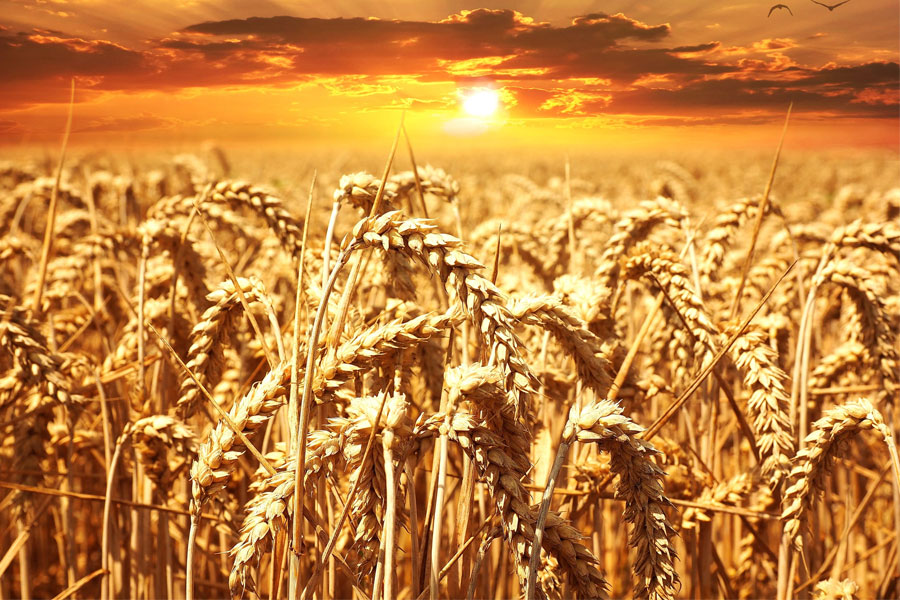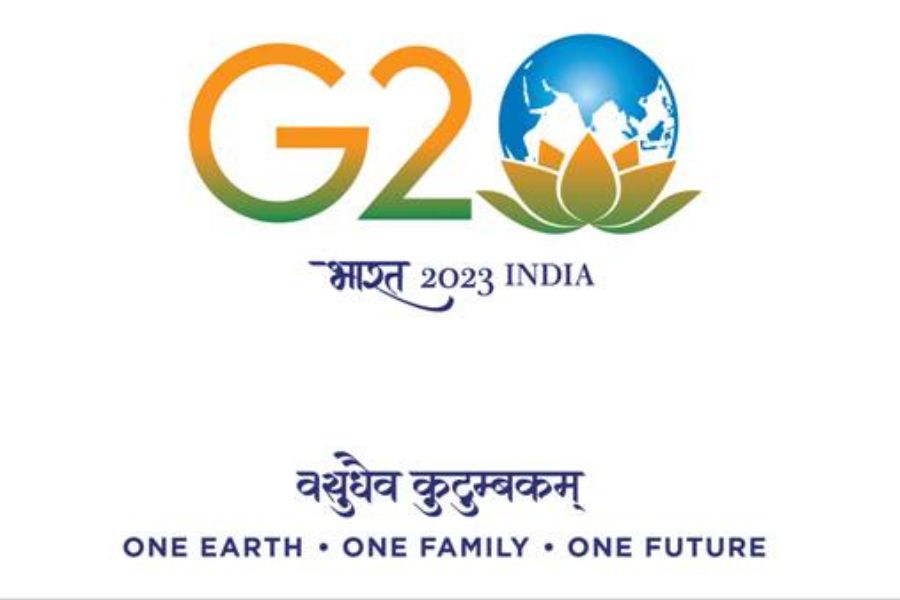Impact of Russia-Ukraine War on Indian F&B Industry
The sanctions imposed on Russia will also have a substantial impact on the global economy & financial markets, with significant ripple effects, such as skyrocketing food & oil prices and frayed supply chains, for other countries. This blog analyses the impact of the Russia-Ukraine war on the Indian F&B industry & how this war ultimately boils down to the question of attaining self-sufficiency for India.
● On February 24, 2022, Russia launched a full-scale military invasion into Ukraine on the pretext of the “demilitarisation and de-Nazification” of Ukraine. While Ukraine is the theatre of this military operation, the effects of this confrontation are anything but local.
● The IMF notes sanctions on Russia will also have a substantial impact on the global economy & financial markets, with significant spillovers to other countries.
● The Indian F&B industry is also severely impacted as it looks at mounting food prices & food shortages on the domestic front and rising freight costs & payment issues with Russia (among other things) on the export front.
● The government needs to explore options like using the Rupee Ruble mechanism for payments or routing payments through third party.

image credit: pexels
On February 24, 2022, Russia launched a full-scale military invasion into Ukraine on the pretext of the “demilitarisation and de-Nazification” of Ukraine. While Ukraine is the theatre of this military operation, the effects of this confrontation are anything but local. Not only could this war spill over to other European nations, it has already started impacting global value chains at a time when the economy was barely bouncing back from the catastrophic effects of the pandemic, buoyed by the mass vaccination drive.
A number of countries have started imposing sanctions (penalties) on Russia. For example, the US is banning all Russian oil and gas imports, the UK will phase out Russian oil by the end of 2022, and Western countries have frozen the assets of Russia’s central bank. Russia has retaliated by banning exports of 200+ products until the end of 2022, among other things. Consequently, food and energy prices have surged in recent days and supply chains are severely broken. The IMF notes:
Should the conflict escalate, the economic damage would be all the more devastating. The sanctions on Russia will also have a substantial impact on the global economy & financial markets, with significant spillovers to other countries.
India is also impacted by this turmoil, as is every major economy around the globe. Dr Ashima Goyal, a member of the Monetary Policy Committee of the RBI, believes that high oil prices can play spoilsport in Indian economy’s post pandemic recovery and raise the inflation forecast.
This blog analyses the impact of the Russia Ukraine war on the country’s F&B industry in particular.
Russia, Ukraine and Indian F&B exports
India’s bilateral trade with Russia during April 2020-March 2021 amounted to US$ 8.1 billion. Coming specifically to the F&B sector, according to the data from the Department of Commerce, the top F&B commodities that India exported to Russia in 2020-21 were fish & crustaceans; coffee, tea & spices; cereals; lac, gums and resins; oilseeds; edible fruits, vegetables and nuts; & meat.
India’s Top 10 F&B exports to Russia in 2020-21
| S.No. | HS Code | Commodity | Jan-Dec 2020 (R) | Jan-Dec 2021 (F) | % Growth |
| 1 | 3 | FISH AND CRUSTACEANS, MOLLUSCS AND OTHER AQUATIC INVERTABRATES. | 83.85 | 128.5 | 53.24 |
| 2 | 9 | COFFEE, TEA, MATE AND SPICES. | 101.33 | 102.33 | 0.99 |
| 3 | 21 | MISCELLANEOUS EDIBLE PREPARATIONS. | 37.76 | 63 | 66.85 |
| 4 | 10 | CEREALS. | 57.93 | 56.8 | -1.95 |
| 5 | 13 | LAC; GUMS, RESINS AND OTHER VEGETABLE SAPS AND EXTRACTS. | 36.67 | 55.02 | 50.02 |
| 6 | 12 | OIL SEEDS AND OLEA. FRUITS; MISC. GRAINS, SEEDS AND FRUIT; INDUSTRIAL OR MEDICINAL PLANTS; STRAW AND FODDER. | 42.73 | 38.55 | -9.77 |
| 7 | 8 | EDIBLE FRUIT AND NUTS; PEEL OR CITRUS FRUIT OR MELONS. | 38.85 | 38.41 | -1.13 |
| 8 | 2 | MEAT AND EDIBLE MEAT OFFAL. | 38.71 | 35.14 | -9.22 |
| 9 | 7 | EDIBLE VEGETABLES AND CERTAIN ROOTS AND TUBERS. | 28.43 | 30.61 | 7.67 |
| 10 | 20 | PREPARATIONS OF VEGETABLES, FRUIT, NUTS OR OTHER PARTS OF PLANTS. | 19.72 | 23.6 | 19.67 |
Source: Department of Commerce, Government of India. (All values are in US$ mn)
In case of Ukraine, some of the major F&B products that India exported in 2020-21 were oilseeds; cereals; coffee, tea, mate & spices; fish & crustaceans; edible vegetables; preparations of vegetables, fruits & nuts; lac, gums, resins & other vegetable saps; and animal/vegetable oils.
| India’s Top 10 F&B exports to Ukraine in 2020-21 | |||||
| Rank | HS Code | Commodity | Jan-Dec 2020 (R) | Jan-Dec 2021 (F) | %Growth |
| 1 | 21 | MISCELLANEOUS EDIBLE PREPARATIONS. | 9.68 | 14.91 | 53.96 |
| 2 | 12 | OIL SEEDS AND OLEA. FRUITS; MISC. GRAINS, SEEDS AND FRUIT; INDUSTRIAL OR MEDICINAL PLANTS; STRAW AND FODDER. | 20.38 | 13.49 | -33.79 |
| 3 | 10 | CEREALS. | 12.88 | 13.39 | 4.02 |
| 4 | 9 | COFFEE, TEA, MATE AND SPICES. | 13.13 | 12.96 | -1.3 |
| 5 | 3 | FISH AND CRUSTACEANS, MOLLUSCS AND OTHER AQUATIC INVERTABRATES. | 7.77 | 11.69 | 50.45 |
| 6 | 7 | EDIBLE VEGETABLES AND CERTAIN ROOTS AND TUBERS. | 3 | 3.29 | 9.6 |
| 7 | 20 | PREPARATIONS OF VEGETABLES, FRUIT, NUTS OR OTHER PARTS OF PLANTS. | 3.5 | 2.56 | -27.02 |
| 8 | 8 | EDIBLE FRUIT AND NUTS; PEEL OR CITRUS FRUIT OR MELONS. | 2.53 | 2.19 | -13.39 |
| 9 | 13 | LAC; GUMS, RESINS AND OTHER VEGETABLE SAPS AND EXTRACTS. | 0.47 | 0.96 | 105.67 |
| 10 | 15 | ANIMAL OR VEGETABLE FATS AND OILS AND THEIR CLEAVAGE PRODUCTS; PRE. EDIBLE FATS; ANIMAL OR VEGETABLE WAXEX. | 0.6 | 0.79 | 31.47 |
Source: Department of Commerce, Government of India. (All values are in US$ mn)
From the above data, it is therefore clear that some of the most affected sectors in the Indian F&B industry are tea, coffee & spices, meat, seafood, oilseeds, fruits and vegetables, and cereals. In case of the oilseeds industry, on the other hand, mustard growers in Rajasthan and Uttar Pradesh can benefit from the skyrocketing vegetable oils & oilseeds prices.
In the context of Indian tea, Russia accounts for about 18% of India’s tea exports. The drastic fall in the value of the Russian Ruble by almost 15% vis-à-vis the US$ as well as the logistical issues in exporting tea consignments (amidst rising oil prices & shipping freights & the fact that consignments to Russia go through Europe) are adding to the woes of Indian tea exporters.
The industry was already battered by payment issues while shipping to Iran, another key market. The industry is worried that less exports could lead to an oversupply of tea in the domestic markets. Similarly, the war has put coffee exports in jeopardy as CIS countries (Russia accounts for 75% of this while Ukraine has more than 20% share) were traditionally the major soluble/instant coffee importers from India.
According to the Coffee Board, the conflict will push up prices of fuel, metal/aluminium (instant coffee is mostly exported in metal cans and containers) and packaging materials in addition to the ballooning of shipping costs. Consequently, overhead costs will rise for exporters. Interestingly, though, this is an excellent time for Indian cereal & spice exporters. Skyrocketing global prices have made Indian wheat, corn & spice exports very competitive as India steps in to fill the void left by the Russia Ukraine war.
Another factor that has worked out in favour of Indian corn exporters is the fact that over the past two years, corn exports from Myanmar have dwindled after the military coup in the country. An anonymous source said, “Ukraine used to be a big exporter of non-GMO corn. Due to tensions in the Black Sea region and high freight rates, demand for maize from South Asia will shift to India as no other origin can feed this demand.”
A major concern that Indian exporters are grappling with is related to payment issues after the West imposed sanctions on Russia, including removing some Russian banks from the SWIFT messaging system. According to reports, Indian exporters have payments between US$ 400-500 million stuck in Russia. However, India & Russia are exploring options to resolve this dilemma including devising a Rupee-Ruble trade payment mechanism.
The domestic F&B industry
In 2020-21, major commodities imported by India from Russia were animal & vegetable fats and oils; edible vegetables and roots; coffee, tea, mate & spices; products of the milling industry (malt); beverages, spirits & vinegar; oilseeds; misc. edible preparations; cereals; lac, gums, resins & other vegetables; meat, fish & molluscs.
India’s Top 10 F&B imports from Russia in 2020-21
| S.No. | HSCode | Commodity | Jan-Dec 2020 (R) | Jan-Dec 2021 (F) | %Growth |
| 1 | 15 | ANIMAL OR VEGETABLE FATS AND OILS AND THEIR CLEAVAGE PRODUCTS; PRE. EDIBLE FATS; ANIMAL OR VEGETABLE WAXEX. | 409.98 | 303.72 | -25.92 |
| 2 | 7 | EDIBLE VEGETABLES AND CERTAIN ROOTS AND TUBERS. | 40.32 | 5.12 | -87.31 |
| 3 | 9 | COFFEE, TEA, MATE AND SPICES. | 4.11 | 3.39 | -17.59 |
| 4 | 11 | PRODUCTS OF THE MILLING INDUSTRY; MALT; STARCHES; INULIN; WHEAT GLUTEN. | 0.91 | 0.5 | -44.95 |
| 5 | 22 | BEVERAGES, SPIRITS AND VINEGAR. | 0.23 | 0.44 | 91.84 |
| 6 | 12 | OIL SEEDS AND OLEA. FRUITS; MISC. GRAINS, SEEDS AND FRUIT; INDUSTRIAL OR MEDICINAL PLANTS; STRAW AND FODDER. | 0.37 | 0.42 | 14 |
| 7 | 21 | MISCELLANEOUS EDIBLE PREPARATIONS. | 0.19 | 0.4 | 109.57 |
| 8 | 10 | CEREALS. | 0.01 | 0.16 | 1,561.86 |
| 9 | 13 | LAC; GUMS, RESINS AND OTHER VEGETABLE SAPS AND EXTRACTS. | 0.14 | ||
| 10 | 16 | PREPARATIONS OF MEAT, OF FISH OR OF CRUSTACEANS, MOLLUSCS OR OTHER AQUATIC INVERTEBRATES | 0.01 | 0 | -79.17 |
Source: Department of Commerce, Government of India. (All values are in US$ mn)
In 2020-21, the major commodities imported by India from Ukraine were animal or vegetable fats; cereals; malt, starches, inulin, wheat gluten; oilseeds; coffee, tea & spices; sugar; edible nuts, fruits & vegetables; beverages, spirits & vinegar; & dairy.
India’s Top 10 F&B imports from Ukraine in 2020-21
| HSCode | Commodity | Jan-Dec 2020 (R) | Jan-Dec 2021 (F) |
| 15 | ANIMAL OR VEGETABLE FATS AND OILS AND THEIR CLEAVAGE PRODUCTS; PRE. EDIBLE FATS; ANIMAL OR VEGETABLE WAXEX. | 1,581.52 | 1,852.34 |
| 10 | CEREALS. | 2.06 | 2.11 |
| 11 | PRODUCTS OF THE MILLING INDUSTRY; MALT; STARCHES; INULIN; WHEAT GLUTEN. | 0.02 | 0.81 |
| 12 | OIL SEEDS AND OLEA. FRUITS; MISC. GRAINS, SEEDS AND FRUIT; INDUSTRIAL OR MEDICINAL PLANTS; STRAW AND FODDER. | 1.03 | 0.43 |
| 9 | COFFEE, TEA, MATE AND SPICES. | 0.19 | 0.42 |
| 7 | EDIBLE VEGETABLES AND CERTAIN ROOTS AND TUBERS. | 0.91 | 0.23 |
| 8 | EDIBLE FRUIT AND NUTS; PEEL OR CITRUS FRUIT OR MELONS. | 0.33 | 0.16 |
| 22 | BEVERAGES, SPIRITS AND VINEGAR. | 0.03 | 0.06 |
| 4 | DAIRY PRODUCE; BIRDS’ EGGS; NATURAL HONEY; EDIBLE PROD. OF ANIMAL ORIGIN, NOT ELSEWHERE SPEC. OR INCLUDED. | 0.05 | 0.03 |
| 17 | SUGARS AND SUGAR CONFECTIONERY. | 0.01 | 0.03 |
Source: Department of Commerce, Government of India. (All values are in US$ mn)
Thus, some of the top F&B commodities that India imports from Russia & Ukraine include animal & vegetable fats and oils; edible vegetables and roots; sugar; dairy; coffee, tea, mate & spices; products of the milling industry (malt); beverages, spirits & vinegar; oilseeds; misc. edible preparations; cereals; lac, gums, resins & other vegetables; meat, fish & molluscs.
The Russia Ukraine war has not only inflated the prices of crude oil, it has also read to a hike in the prices of edible oil. Russia (20%) & Ukraine (70%) together account for over 90% of India’s sunflower oil imports. Given this situation, Indians have reportedly started panic buying sunflower oil.
Sandip Bajoria, CEO, Sunvin Group, a consulting company opines:
“Due to sanctions on Russia, it is now difficult to open Letter of Credit (LC) to import sunflower oil. We have requested the government to explore the possibility of getting exclusion for sunflower oil from sanctions like the European countries have for oil and gas.”
The war has also led to a corresponding rise in the prices of wheat and spices in India. For example, coriander prices have increased by around 30% during the past few months, while jeera prices have risen by 25-30%. Wheat prices have escalated from Rs 21 per kg before the outbreak of the war to Rs 24 per kg.
Some exporters are anxious that India must check its wheat exports lest prices can increase further in the domestic market and there could be local shortages. The war has also inflated the process of other kitchen staples like milk and chicken.
The way forward
The rise in the price of products like edible oil and wheat is indubitably likely to lead to inflation for consumers, in addition to increasing India’s current account deficit (CAD). The CAD is expected to widen from 1.7% last year to 2.6% of the GDP in the financial year 2023. At the same time, the ramifications of the Russia-Ukraine war can be felt as the value of Rupee falls. If the confrontation continues to last over the next months, India will face a far more difficult situation in the months ahead. Sujit Patra, Secretary, Indian Tea Association, opines:
“Russia is the largest destination for Indian tea. However, while at present the war has not impacted the industry significantly because usually exports start around August/September. Two majors challenge that the industry are availability of ship/containers and likely to face is the payment issue due to sanctions. Therefore, we have suggested the government to explore options of the Rupee Ruble payment system, ECGC coverage given risk cover to exporters and more working capital at subvention rates considering huge cost increase in shipment.”
Amidst these tense times, the country needs to chalk a robust payment system with Russia, like it did for the sanctions hit Iran, or route payments through other countries. It also needs to look inward and build a self-sufficient ecosystem. India may need to look at alternate markets for some of the F&B products like coffee and tea. Meanwhile, India is also faced with an inflation problem to grapple with in the short term, especially in sunflower oil.













Leave a comment